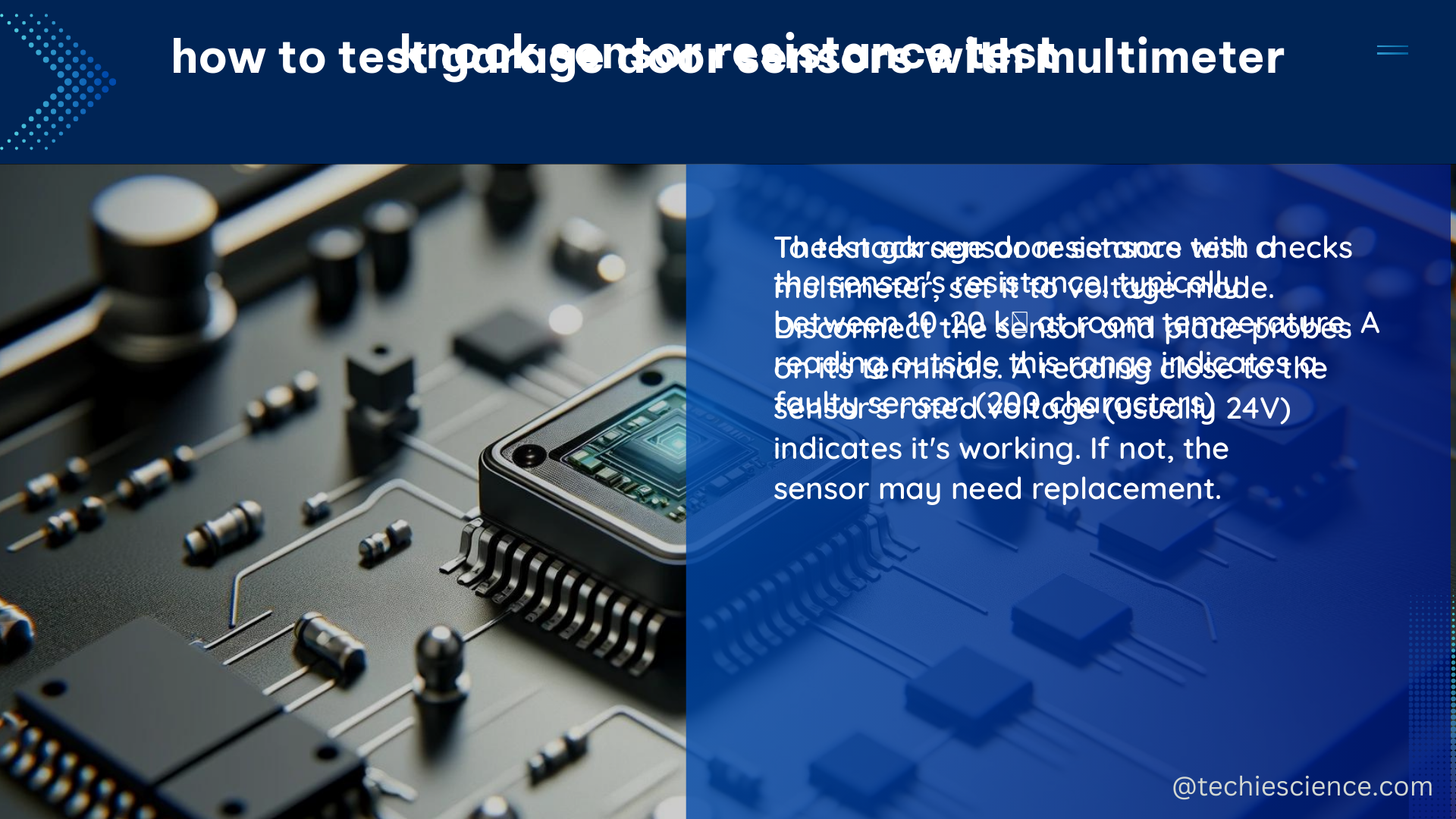The resistance of a working knock sensor typically falls between 500 and 600 kilo-ohms. When testing the knock sensor, it’s crucial to use the correct meter settings. A 40 M-ohm meter set to auto-range should suffice, and it usually displays a 0 for infinite resistance. In contrast, if you get an “open lead” reading, it means the sensor is not connected or has an open circuit.
Understanding Knock Sensor Resistance
The knock sensor is a critical component in modern engines, responsible for detecting engine knocking or detonation. This information is then used by the engine control unit (ECU) to adjust the ignition timing and fuel delivery to prevent engine damage. A properly functioning knock sensor is essential for optimal engine performance and fuel efficiency.
The resistance of a healthy knock sensor typically falls within a specific range, which can vary depending on the make and model of the vehicle. However, most knock sensors have a resistance value between 500 and 600 kilo-ohms (kΩ) at room temperature. This resistance value can change slightly as the sensor heats up during engine operation, but it should remain within this general range.
Factors Affecting Knock Sensor Resistance
Several factors can influence the resistance of a knock sensor, including:
- Temperature: The resistance of the knock sensor will decrease as the temperature increases. This is due to the positive temperature coefficient (PTC) of the sensor’s internal materials.
- Sensor Condition: A worn or damaged knock sensor may have a resistance value outside the normal range, indicating a problem with the sensor.
- Wiring and Connections: Issues with the wiring or connections between the knock sensor and the ECU can also affect the resistance reading.
It’s important to note that a resistance reading outside the normal range does not necessarily mean the knock sensor is faulty. Other factors, such as wiring problems or sensor degradation, can also cause abnormal resistance values.
Testing Knock Sensor Resistance

To test the resistance of a knock sensor, you’ll need a digital multimeter (DMM) capable of measuring high resistance values. Here’s a step-by-step guide on how to perform the test:
- Set up your multimeter: Set your multimeter to the lowest DC volts setting, typically 200 mV or 2 V.
- Connect the multimeter: Use alligator clips to connect the multimeter to the knock sensor, ensuring a stable connection without worrying about moving wires.
- Tap the sensor: Gently tap the sensor with a wrench while observing the multimeter. A working sensor should produce a voltage increase when tapped, while a bad sensor may not produce any voltage change.
Interpreting the Results
If the resistance of the knock sensor falls within the expected range of 500 to 600 kΩ, the sensor is likely functioning correctly. However, if the resistance is significantly higher or lower, it may indicate a problem with the sensor or the associated wiring.
Here’s a table to help you interpret the resistance readings:
| Resistance Reading | Interpretation |
|---|---|
| 500 – 600 kΩ | Normal, sensor is likely functioning correctly |
| Less than 500 kΩ | Sensor may be shorted or damaged |
| Greater than 600 kΩ | Sensor may be open or have a high resistance issue |
| “Open lead” | Sensor is not connected or has an open circuit |
It’s important to note that a bad knock sensor can result in power loss, especially in the mid-range, and may cause the engine to misfire or hesitate during acceleration. However, a bad knock sensor may not always trigger a check engine light or produce a specific diagnostic trouble code, making diagnosis more challenging.
Additional Considerations
When testing the knock sensor resistance, keep the following points in mind:
- Sensor Location: Knock sensors are typically located near the engine block or cylinder head, where they can detect engine vibrations and detonation. Ensure you can safely access the sensor for testing.
- Wiring Harness: Inspect the wiring harness connected to the knock sensor for any signs of damage, corrosion, or loose connections, as these can also affect the resistance reading.
- Engine Condition: A malfunctioning knock sensor may be a symptom of a larger issue, such as engine wear, incorrect fuel octane, or other problems that can cause engine knocking or detonation.
- Diagnostic Codes: While a bad knock sensor may not always trigger a specific diagnostic trouble code, it’s still important to check for any related codes that may provide additional clues about the problem.
- Replacement Considerations: If the knock sensor is found to be faulty, it’s essential to replace it with a genuine or high-quality aftermarket part to ensure proper engine operation and prevent further damage.
Conclusion
The knock sensor resistance test is a crucial step in diagnosing and troubleshooting engine performance issues related to engine knocking or detonation. By understanding the normal resistance range and following the proper testing procedures, you can effectively assess the condition of the knock sensor and identify any potential problems. Remember to always use the correct tools and safety precautions when working on your vehicle’s engine components.
References
- Knock Sensor Test Yields OL
- How to Test a Knock Sensor
- Knock Sensor Testing
- Knock Sensor Test
- Knock Sensor Diagnosis

The lambdageeks.com Core SME Team is a group of experienced subject matter experts from diverse scientific and technical fields including Physics, Chemistry, Technology,Electronics & Electrical Engineering, Automotive, Mechanical Engineering. Our team collaborates to create high-quality, well-researched articles on a wide range of science and technology topics for the lambdageeks.com website.
All Our Senior SME are having more than 7 Years of experience in the respective fields . They are either Working Industry Professionals or assocaited With different Universities. Refer Our Authors Page to get to know About our Core SMEs.